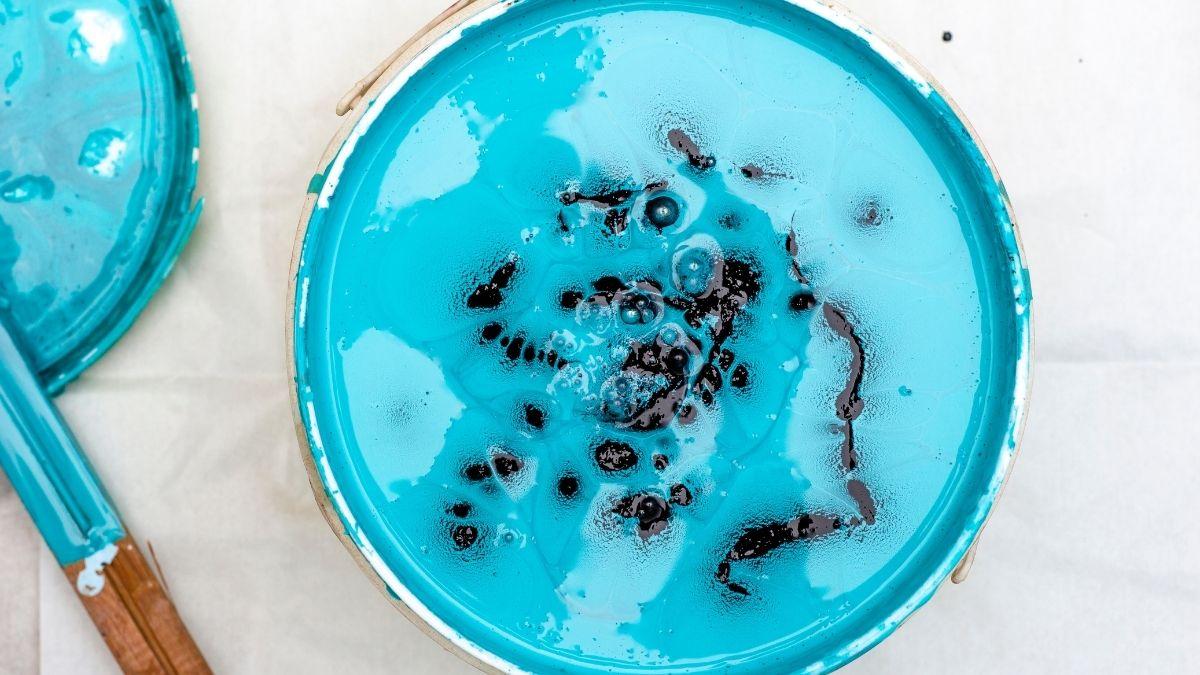
Painting has always helped me relax, and as I started to encourage my kids to get their hands dirty, painting with them quickly became one of my favorite pastimes!
It wasn’t long before I found myself looking for ways to level up my painting skills, and I found that using textured paint can make quite the difference. While you can buy textured paint in stores, they can be expensive and cannot be applied to every material.
Luckily, making your own textured paint isn’t very complicated. Here’s a guide on how to make textured paint for crafts.
4 Steps For Making Textured Paint for Crafts
To use textured paint as the base coat, mix white latex paint and the texturing medium and cover the canvas as desired. You can then use colored paint on the canvas as you please. In contrast, to use textured paint as the topcoat, mix the texturing medium with paints that are a shade darker than you desire.
The process of making textured paints is a lot more involved than how I’ve outlined it above – so, here’s a detailed breakdown to help you along:
Step #1: Decide How You’re Using Textured Paint
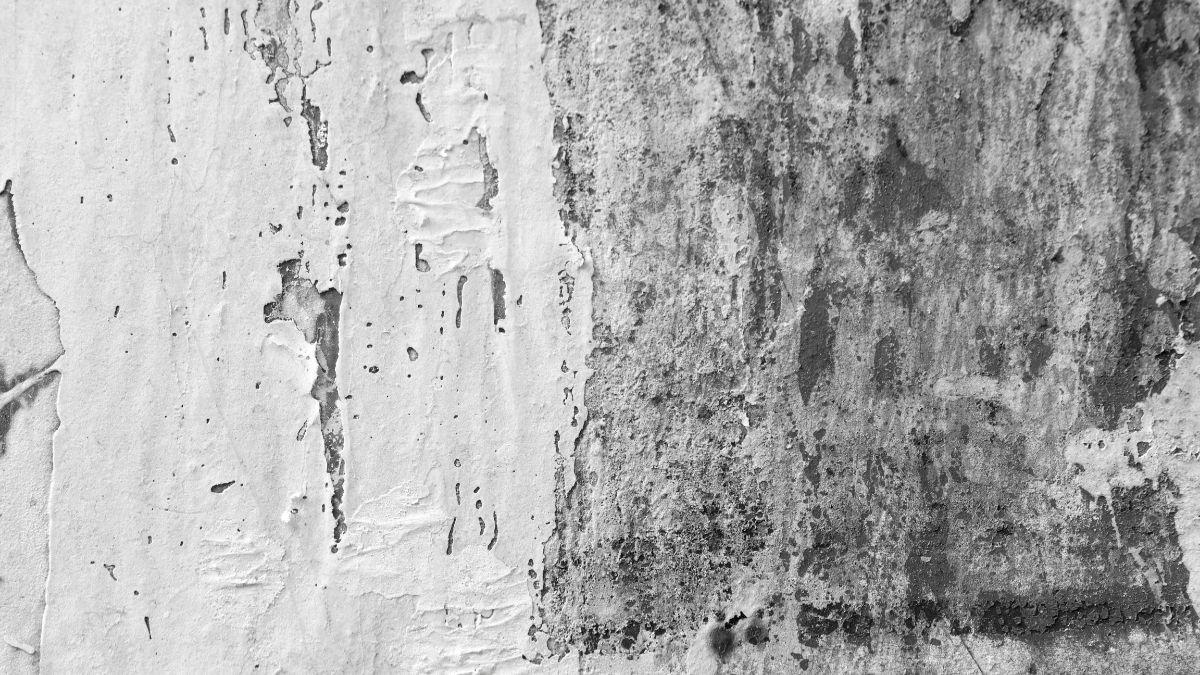
It’s advisable that you use the textured paint as the base and then paint with regular colors. While you can use textured paint as the topcoat, you will have to use paints that are a shade darker than what you desire. This is because the topcoat will make the paint lighter.
Using textured paint as the base coat is a lot more convenient. You don’t have to worry about using darker shades of paint or the gloss or finish of the base coat.
After you apply the base coat, paint a little portion of whatever you’re painting on. Let the paint dry, and see if the colors look right before painting the entire surface.
Step #2: Pick the Correct Texturing Medium
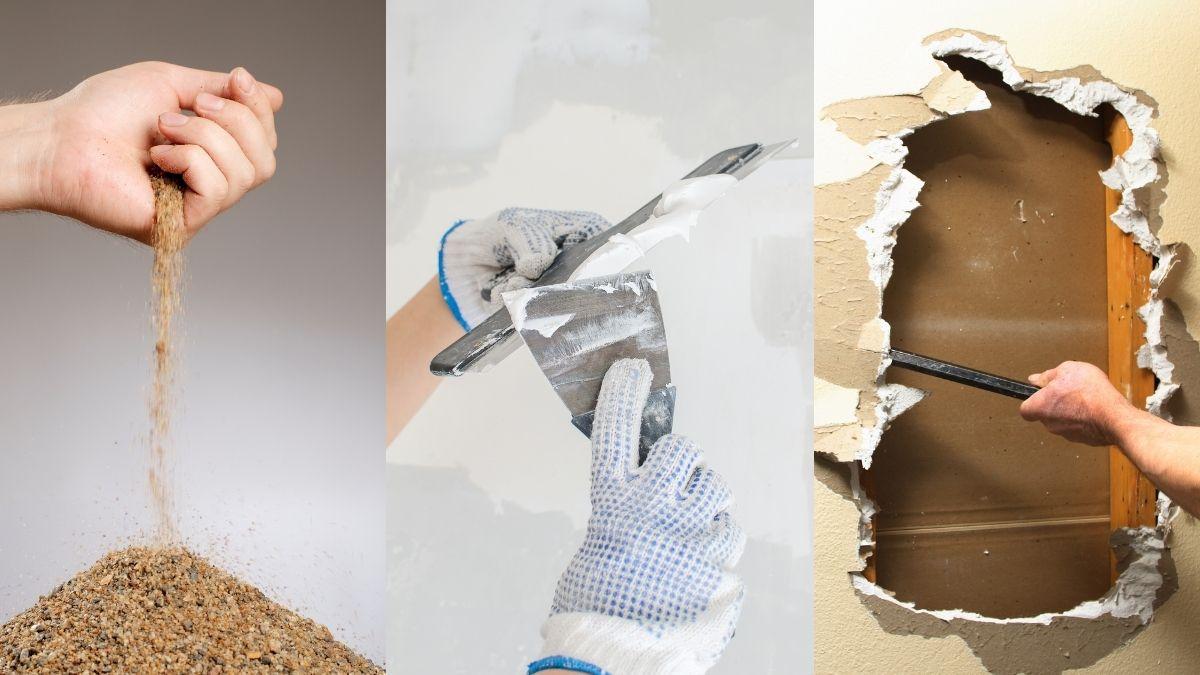
Pre-mixed drywall mud, spackling compound, dry sheetrock compound, and sand are some of the several options you have available. You can pick whichever texturing medium helps you achieve the look you want.
Bear in mind that dry powder mixes a lot better with paint than something like drywall compound. If you’ve never worked with textured paints before, I advise you to pick the medium you find easiest to use.
Step #3: Mix the Texturing Medium with the Paint
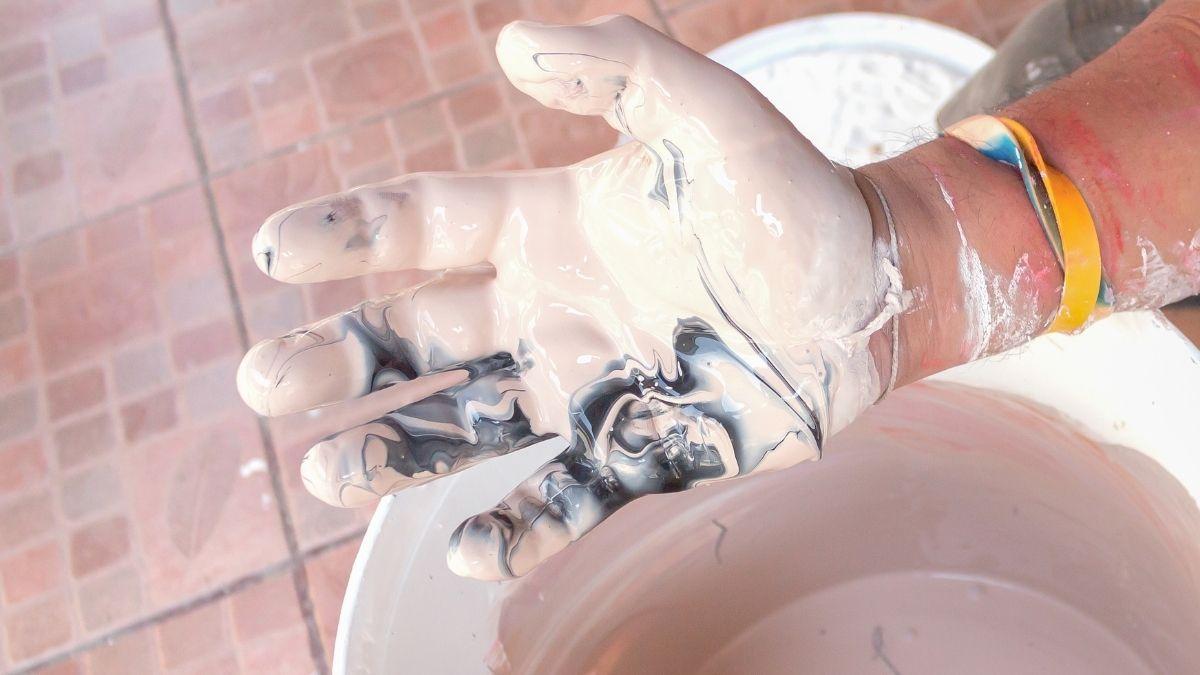
Sift the texturing medium through a sieve, and add a cup of the medium to the paint. Continuously stir the mixture with a piece of wood until the paint and medium are incorporated.
Step #4: Get the Consistency Right
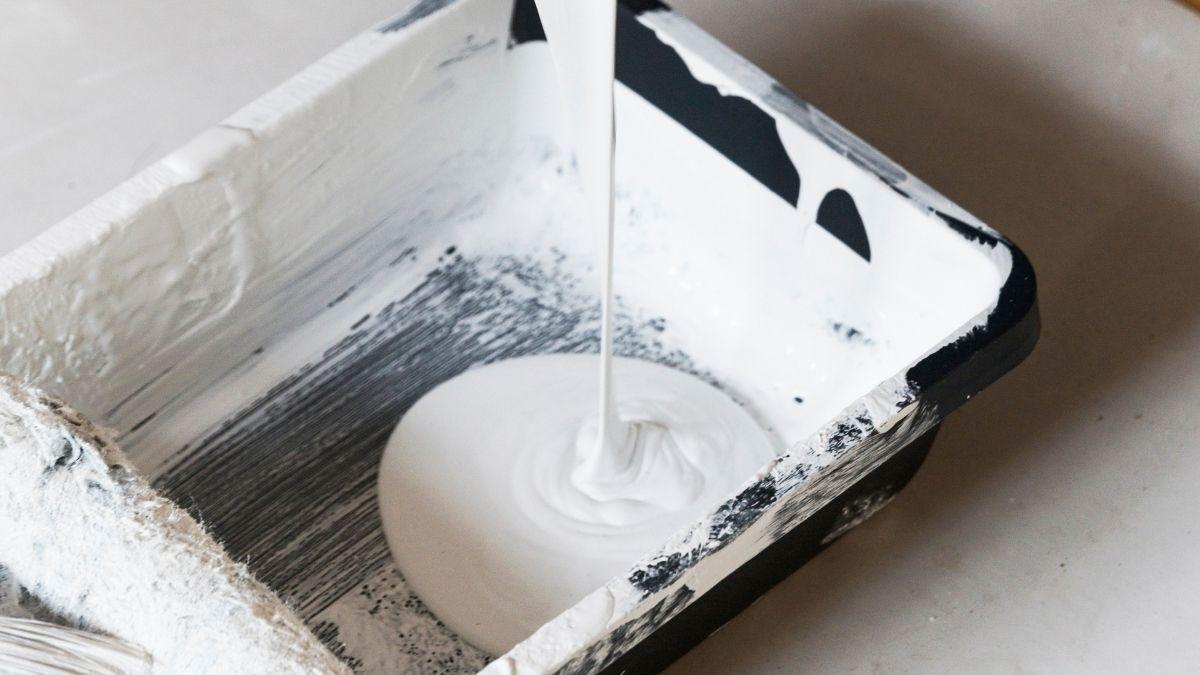
If you think the paint needs more texture, add another cup of the texturing medium, and stir. Ensure that you only add the medium one cup at a time since this helps you avoid making the paint too thick. It’s also an excellent way of keeping track of how much medium you mixed if you need another batch later.
If you’re using something like pre-mixed drywall mud, mix only half-cup at a time since the medium thickens the paint a lot more easily.
What to Add to Paint to Make it Thick?
Flour, sugar, sand, and modeling paste are some mediums you can mix with paint to make it thicker. But bear in mind that not every medium thickens every kind of paint effectively.
The general guidelines below will help you find your best options:
Watercolor Paints
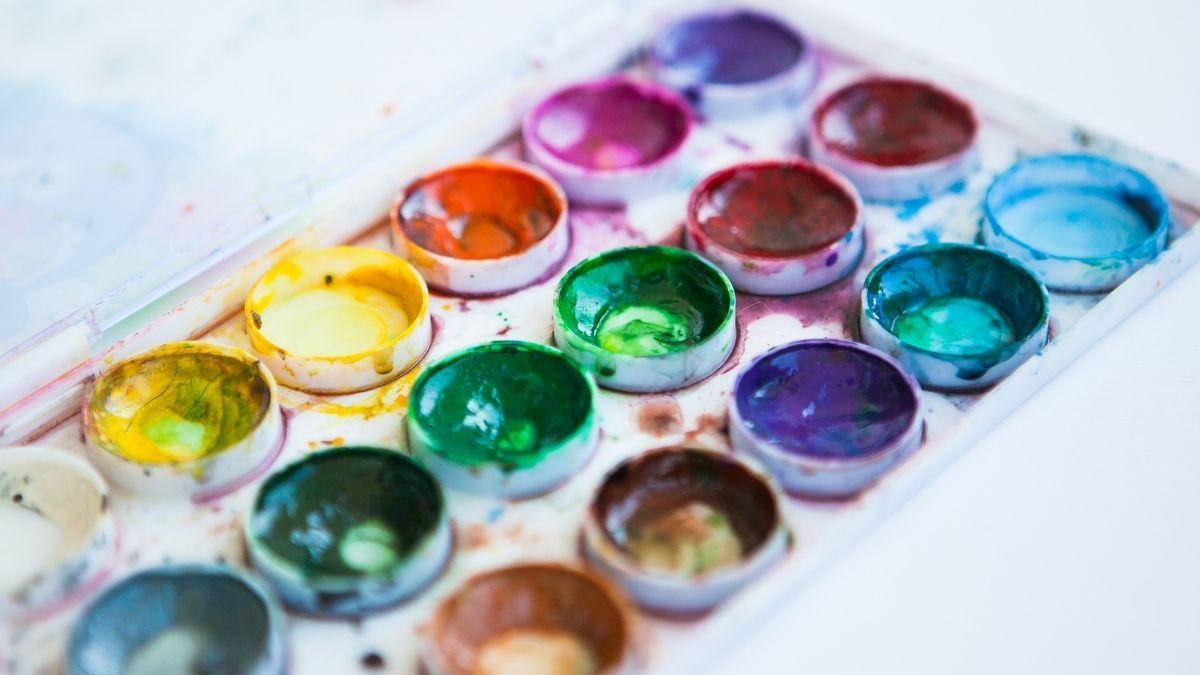
Using more paint and less water is the easiest way to make watercolors thick. However, if you want your paint to be thicker, you can use a watercolor medium. Besides making the paint thicker, the medium will allow the paint to flow better and make the paint look richer.
Additionally, the watercolor medium makes mixing colors a lot smoother and extends the paint’s drying time.
Tempera Paints

Like watercolor paints, tempera paints are mixed with water before use. So to make a thick paint with the tempera powder, all you have to do is mix a lot of pigment with a little bit of water. But if you find that the paint is still not thick enough, you can mix paint thickening agents like flour or sugar to the tempera paint.
Some other paint thickening agents you may already have lying around the house include cornstarch, salt, sand, and sawdust. Agents like cornstarch and flour give the paint a smoother texture, but if you’re going for a coarser look, mix sand or salt with the paint.
The Dutch painter Rembrandt used flour to thicken his paints, so you don’t have to worry about the reliability of using household items as thickening agents!
Acrylic Paints
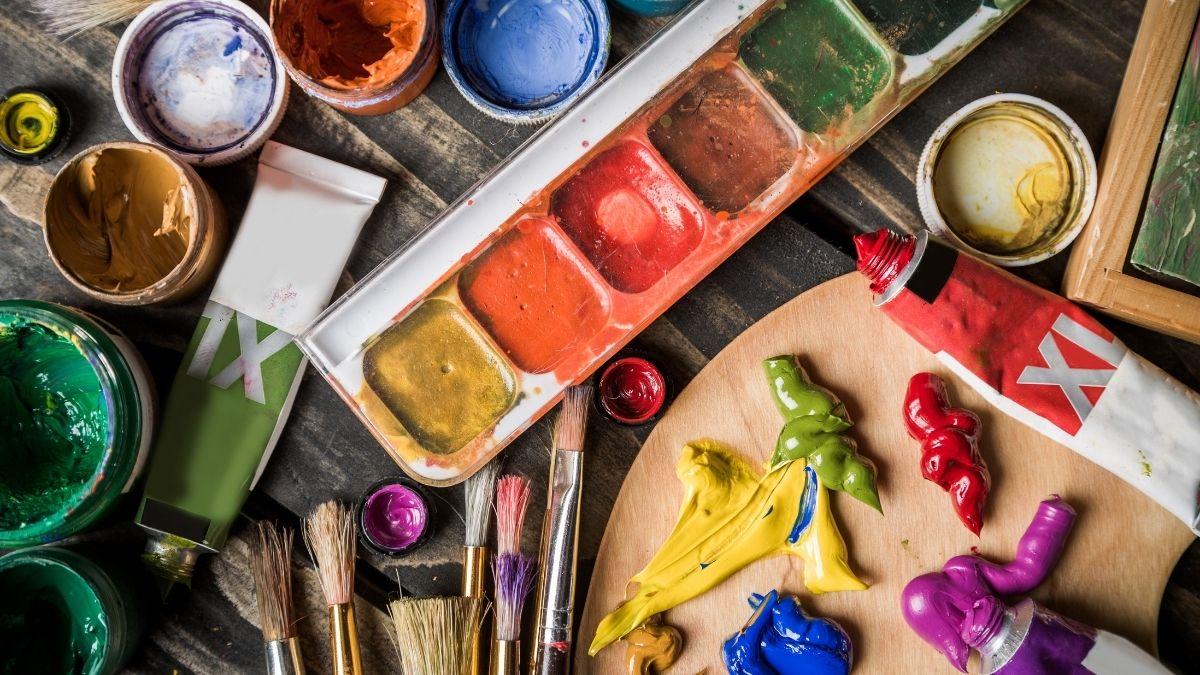
Adding acrylic medium to acrylic paint will make it thicker and add texture. Gel mediums are the go-to, but they’re of two types: gloss and matte. If you want the paint to look shiny, use the gloss medium. The matte medium will give the painting a matte finish and is an excellent option if you’re using the impasto technique.
Using modeling paste is the right way to go if you want extremely thick paint to make a three-dimensional painting.
Oil Paints
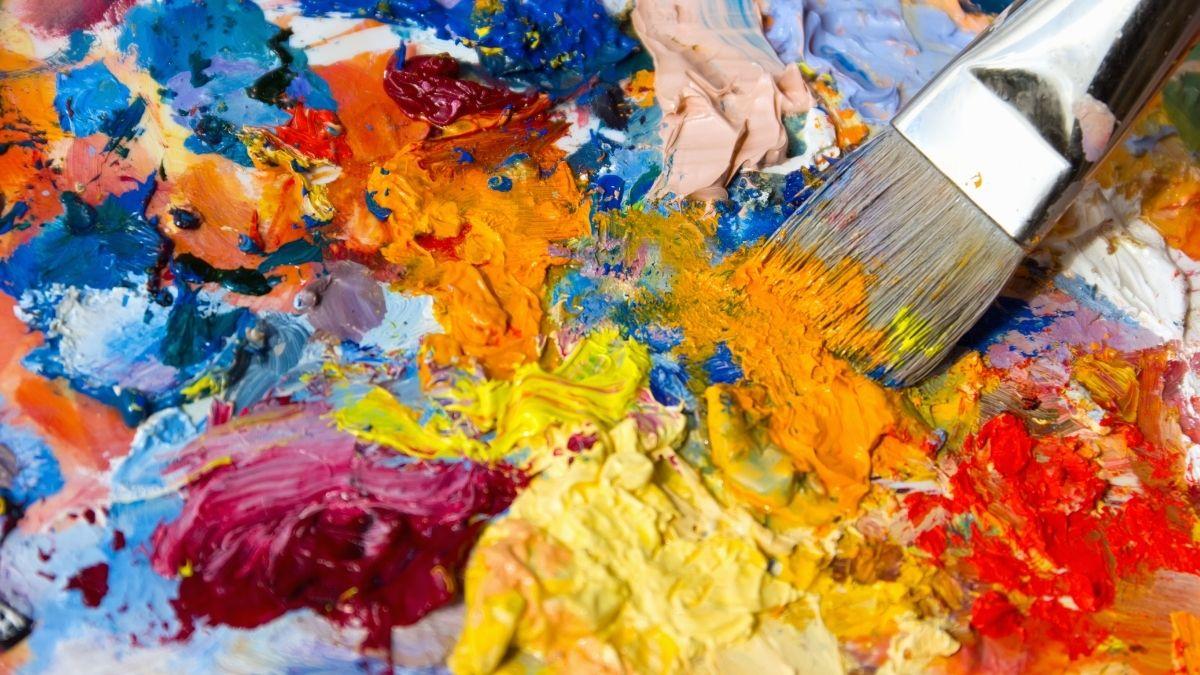
Adding less turpentine should make oil paints quite thick. But, if you need it to be thicker, mix the oil paints with stand oil instead of turpentine. It increases drying time and gives the paint a glossy finish. Painting mediums like alkyd gel medium and alkyd butter keep drying time short and give the paint the same gloss as stand oil.
To give oil paints a matte finish, mix beeswax with mineral spirit and add it to your paint. It will also make the paint thicker. If you don’t have beeswax and mineral spirit handy, you could buy a pre-mixed cold wax medium and mix it with oil paints for the same effect.
Note: Adding more than 30% beeswax and mineral oil mix (or cold wax medium) by volume to the oil paint will make the paint unusable on canvas. But, the paint should retain its rigidness on wood and hardboard panels.
Latex Paints
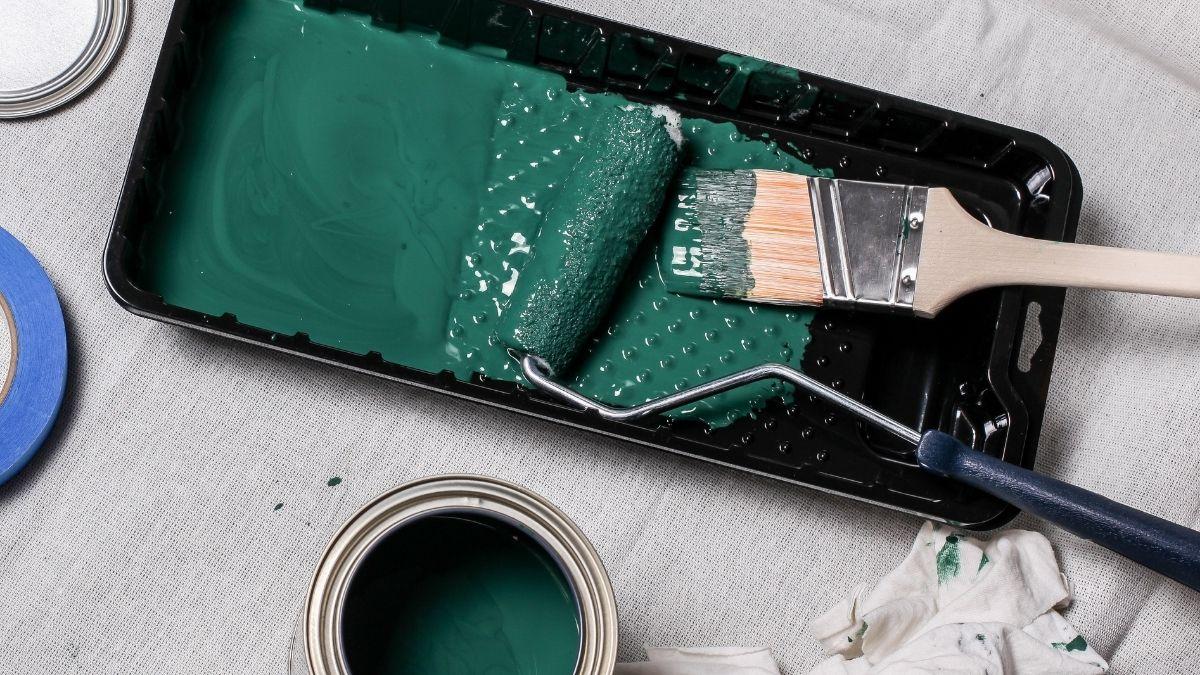
You can thicken latex paint by adding joint compound, Hydroxyethyl cellulose, or household thickening agents like cornstarch or flour. You could also expose the paint to the air. The water will evaporate, thickening it more by the hour. Stir the paint every hour and leave it exposed to the air until it reaches the desired consistency.
If you’re using thickening mediums, I recommend using an electric drill equipped with a mixer attachment to mix the paint and the medium. It’s a lot easier and more thorough than mixing them by hand.
Using Hydroxyethyl cellulose is a quicker way to thicken both interior and exterior latex paints. To use it, mix one part HEC with six parts water to create a solution. Depending on how much HEC and water you mix, you will need to wait between five and thirty minutes for it to thicken. When it becomes a slurry, begin stirring the paint and pour the slurry into it slowly.
Mixing drywall joint compound with latex paint is the best way to give it more texture. Just a little bit of compound can thicken the paint quite a bit. Make sure you add a little at a time and mix it into the paint thoroughly.
If you’re in a pinch, using household thickening agents should make the paint decently thick.
How To Make Textured Paint For Crafts: A Final Recap
Now you know how to make fantastic, great-value textured paint at home, I’ll bet you’re itching to get started! Before you do, here’s a quick recap of what we’ve run through in this guide.
- Decide and plan on how you’re going to use textured paint.
- Pick your texturing medium (depending on the finish you’d like to create).
- Mix your paint and textured medium together.
- Improve the consistency by adding thickening as needed.
Making your own textured paint can be a lengthy process – but it can be a lot of fun, too! Time to flex those creative muscles and see what you can produce.
Originally posted 2021-10-21 04:04:00.




